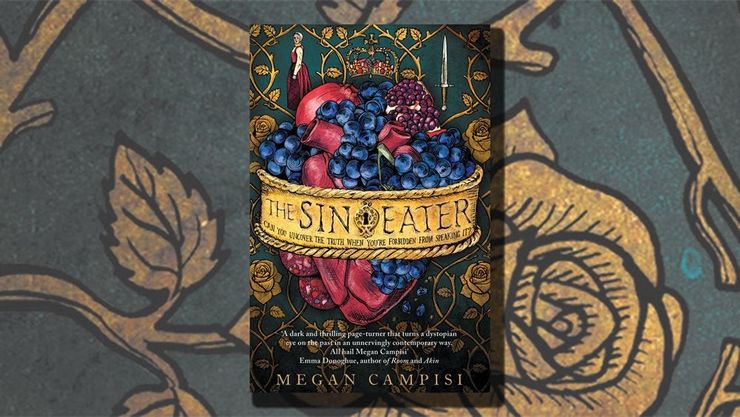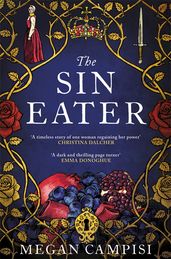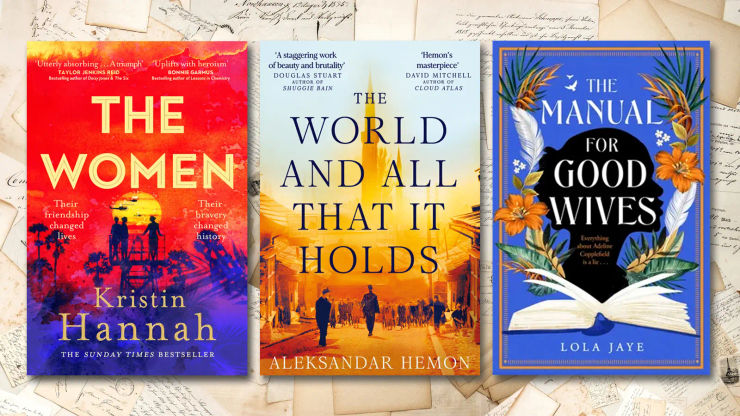The real Sin Eaters: Campisi on the truth behind her novel
The long-forgotten custom of sin eating was the inspiration for Megan Campisi's debut novel The Sin Eater, but what was a sin eater? Here, Megan tells us more.

Folklore tales of sin eaters – people paid to perform a ritual believed to allow them to take on the sins of the deceased – have been passed down through generations, although the practice died out many years ago. This arcane rite, thought to only have been practised in Wales and on the Welsh border, was the inspiration for Megan Campisi’s book The Sin Eater. Set in an alternative 16th century England, the novel follows fourteen-year-old ophan May as she is condemned to a life of exile as a sin eater. When she is called to the deathbed of one of Queen Bethany’s courtiers, she discovers a dark conspiracy at the heart of the court. Here, Megan explores the history of this fascinating funeral custom and explains how it inspired her debut novel.
Looking for more historical fiction? Don't miss our edit of the best historical fiction novels of all time.
As children, my friends and I would sit in a circle and play a game called telephone. It began with one girl whispering a phrase to the girl next to her. That girl would whisper what she heard to the next girl, and on around the circle until the final girl would triumphantly announce what she heard to the group. The phrase was always ridiculously transformed. It was enough, young as we were, to make us laugh with joy and wonder at the magical transformation we had wrought on something as simple as words.
This is what folklore is to me: A game of telephone in which pieces of cultural history are whispered across time from generation to generation. The story changes a bit with each telling – meaning shifts, sometimes becoming shrouded or lost – until the story is a delicious tangle of history, invention, and magic.
The folklore of sin eaters was the whispered inspiration for my debut novel, The Sin Eater. A faint whisper. This Welsh custom’s particulars are elusive. Nearly all our information comes from a handful of sources, several secondhand, and one over three hundred years old.
Most folklorists believe the scarcity of evidence is due to sin eating’s pagan nature; individuals in a Christian culture might have been reticent to record their participation in a 'heretical' custom.
One of the few firsthand accounts is from a man called Matthew Moggridge who presented his description of sin eating to a meeting of the Cambrian Archaeological Association in 1852:
‘When a person died, the friends sent for the sin-eater of the district, who on his arrival placed a plate of salt on the breast of the defunct, and upon the salt a piece of bread. He then muttered an incantation over the bread, which he finally ate, thereby eating up all the sins of the deceased. This done, he received his fee of 2 [shillings], 6 [pence], and vanished as quickly as possible from the general gaze . . . he was utterly detested in the neighborhood—regarded as a mere pariah—as one irredeemably lost.’
As we understand it, sin eating was a voluntary profession (as much as being forced by poverty into undesirable work is voluntary). It also seems to have been practiced by both women and men. The last sin eater is purported to have died in Shropshire in 1906.
In The Gift of Suffering, Ingrid Harris suggests sin eating began in Protestant communities to fill 'the vacuum left by the departure of the Catholic sacraments of confession and absolution.' Other historians relate sin eating to the ancient British custom at wealthy funerals of distributing a dole of bread to the poor in exchange for prayers for the deceased. Certainly, a host of mortuary customs in Europe and beyond involve food, particularly the consumption of bread or cake.
While I’m fascinated by the folklore of sin eating, the world of my novel departs in many ways from this history. My novel is a mystery set in a reimagined Elizabethan England in which a young woman is condemned to be a sin eater, but turns her curse into an unexpected source of power. She uncovers a series of murders that implicate the queen and sets out to solve them using her ingenuity and her 'pariah' status.
For the story I envisioned to work, sin eating couldn’t remain a rare post-mortem ritual as it was in history; it needed to transform into a deep, necessary communion between two people that was woven into the fabric of everyday society. I added a confession ritual and gave sins corresponding foods that would be publicly displayed at funerals. I institutionalized the sin eater’s social isolation, restricted practitioners to women, and made sin eating a punitive occupation, rather than a voluntary one. I like to think of The Sin Eater as a tribute to folktales, my own mixture of history, invention, and mystery.
But let’s return for a moment to the realm of traditional folktales. There are claims that sin eating followed Welsh immigrants to the United States, taking root in Appalachia. This past spring in response to COVID-19, my family and I left our home in Brooklyn to stay with relatives in western North Carolina, in the heart of Appalachia. I seized the moment to do some local research about sin eating’s rumored migration. (Note: I was limited to online research because of the pandemic, which really could have been conducted anywhere, but it felt local.)
I corresponded with an anthropologist at Appalachian State University, as well as the director of the Western North Carolina Historical Association and several regional university research librarians – all of whom were incredibly generous with their time. Alas, we turned up very little: a few contemporary, secondhand accounts. It was another game of telephone, but this one with a poor connection.
I admit I was disappointed. I had had fantasies of discovering a hidden trove of morbidly fascinating and esoteric folklore. But in the end, the most satisfying part of first learning about sin eaters in Wales was not just the history itself, but the inspiration I took from it. That inspiration sparked The Sin Eater, and hopefully will also light up the imaginations of people when they read it – and perhaps when they tell others about it, the story changing wonderfully with every new voice.
In this video Megan discusses what sparked the ideas behind The Sin Eater:
The Sin Eater
by Megan Campisi
Set in a thinly disguised 16th century England, Megan Campisi��’s debut novel is a wonderfully woven tale of treason and treachery, women and power. When fourteen year old May is arrested for stealing a loaf of bread she is sentenced to become a Sin Eater, a devastating sentence that will see her shunned by society and exiled to the edge of town. For a Sin Eater hears the confessions of the dying and eats their sins as a funeral rite, and is believed to be stained by these sins. When May is called to hear the deathbed confessions of two of the Queen’s courtiers she hears whispers of a terrible rumour her invisibility allows her to investigate.



